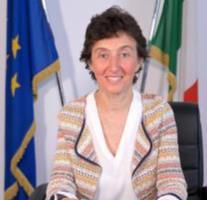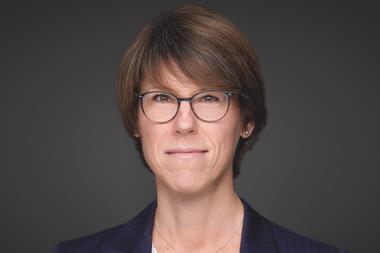Italian pension funds are increasingly looking to shift their investments to listed and unlisted national companies, a trend that could cement as assets under management (AUM) grow over time.
Thus far, Italian schemes have shown restraint on investments in Italian equities, standing at €4bn, or 2.4% of total AUM, mirroring the peculiar structure of the Italian industrial landscape, and the limited level of capitalisation of the equity market in Italy, Francesca Balzani, acting president of COVIP, said this morning introducing the annual report of the Italian pensions regulator.
But there is increasing interest among the country’s pension industry to invest in domestic listed and unlisted companies, a trend that has great growth potential, according to COVIP, because of rising mass of assets managed under the second-pillar pension system, overcoming equity market capitalisation limits.
“Many pension funds are [also] expanding their investment strategies in favour of unlisted securities in private equity and private debt, often through joint initiatives,” Balzani said.
Industry-wide pension funds have created consortia to invest in private debt through ‘Progetto Zefiro’ (Project Zephyr) and through ‘Progetto Iride’ (Project Iris) to invest in private equity.
According to COVIP, pension funds invest 54.6% of their assets in government bonds and in other debt securities, 15.4% in Italian public debt securities. Real estate investments, almost exclusively carried by so-called pre-existing pension funds, amount to 1.9%.
The schemes allocate €35.4bn, or 20.8% of total AUM, to the Italian economy, a slight reduction in 2022 compared with 2021 (22.7%), with government bonds taking the highest share (€26bn).
Pension funds have total assets worth €205.6bn, equivalent to 10.8% of the country’s GDP. Contributions amounted to €18.2bn last year, a €600m increase year-on-year.
The crisis that unfolded in the past years have tested the second-pillar pension system in Italy, according to Balzani, but the number of members and contributions have grown last year, and returns are positive over the medium to longer term, on average, and in line with the revaluation of severance payment ‘Trattamento di Fine Rapporto’ (TFR).
Long-term positive returns
Last year, Italian pension funds suffered losses, with equity sub-funds returning on average -1.7% in industry-wide pension funds, -12.5% in open pension funds, and -13.3% in individual pension plans (PIPs).
The sub-funds ‘obbligazionario’ returned -10.3% in industry-wide pension funds, and 7.6% in open pension funds, Balzani said, citing the report.
On average, from 2012 to 2022, equity sub-funds achieved returns of 4.7%-4.9%, and the sub funds ‘bilanciato’ in the range of 1.7%-2.9%. The average rate of revaluation of the TFR during the period was 2.4% on average per year.

The second-pillar pension system – previdenza complementare – has proved to be robust, and resilient in 2022, despite negative returns, but it is essential to support pension funds and the first-pillar pension system – casse di previdenza – in their efforts to prevent and manage risks, Balzani said, adding that they will continue to deal with uncertainties this year.
There were 332 types of second-pillar pension arrangements in Italy, including 33 industry-wide pension funds, 40 open pension funds, 68 PIPs, and 191 ‘pre-existing’ pension funds, already active before the reform of the second-pillar pension system passed in 1992.
“In 1999, the number of pre-existing pension funds was double, thus the process of consolidation is proceeding, and essentially [the process] concerns pre-existing pension funds,” Balzani said.
The number of second-pillar pension members last year increased by 5.4% year-on-year to 9.2 million, equivalent to 36.2% of Italy’s labour force.
Gender gap
“Unfortunately, the gender gap remains significant, with women representing only 38.2% [of members],” Balzani said.
The gender gap is particularly marked in industry-wide pension funds, where women make up 27.1% of members. The gap is smaller in open pension funds, with 42.2% of women as members, and in PIPs, where women make up 46.6% of the members, according to COVIP.
“Five years ago, the picture [on gender gap in the second-pillar pension system] did not differ much from today’s. It is necessary [to make] a strong effort to reduce the gap,” COVIP’s president said.
According to the regulator, 18.8% of people under 35 years old have signed up for a pension arrangement in the second pillar in Italy, up 1.1% compared with five years ago. It added that 57.1% of members are in northern Italy.
“Women, young people, and workers in the southern part of Italy contribute on average less than men in the northern part of the country [to second-pillar pensions],” Balzani said. The average contribution is €2,770 per year.
COVIP is in favour of reviewing tax incentives for low-income earners, and of a new form of silent consent, with employees that would enrol in pension schemes by transferring the TFR without making a formal decision, but the payment made to a lifecycle option with higher exposure to equities at the beginning, and reduced exposure closer to retirement age.
The latest digital edition of IPE’s magazine is now available

















No comments yet